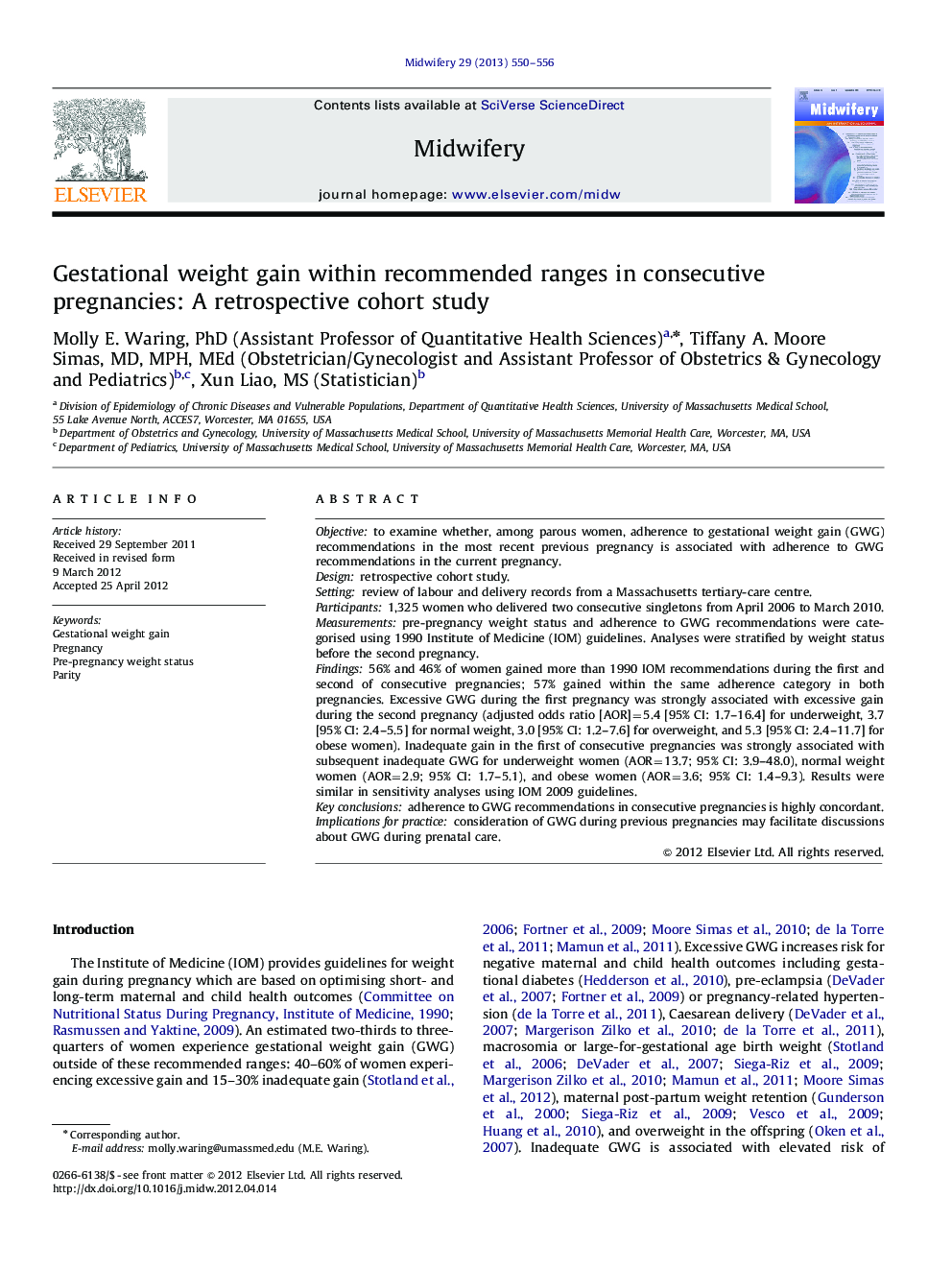| Article ID | Journal | Published Year | Pages | File Type |
|---|---|---|---|---|
| 1084871 | Midwifery | 2013 | 7 Pages |
Objectiveto examine whether, among parous women, adherence to gestational weight gain (GWG) recommendations in the most recent previous pregnancy is associated with adherence to GWG recommendations in the current pregnancy.Designretrospective cohort study.Settingreview of labour and delivery records from a Massachusetts tertiary-care centre.Participants1,325 women who delivered two consecutive singletons from April 2006 to March 2010.Measurementspre-pregnancy weight status and adherence to GWG recommendations were categorised using 1990 Institute of Medicine (IOM) guidelines. Analyses were stratified by weight status before the second pregnancy.Findings56% and 46% of women gained more than 1990 IOM recommendations during the first and second of consecutive pregnancies; 57% gained within the same adherence category in both pregnancies. Excessive GWG during the first pregnancy was strongly associated with excessive gain during the second pregnancy (adjusted odds ratio [AOR]=5.4 [95% CI: 1.7–16.4] for underweight, 3.7 [95% CI: 2.4–5.5] for normal weight, 3.0 [95% CI: 1.2–7.6] for overweight, and 5.3 [95% CI: 2.4–11.7] for obese women). Inadequate gain in the first of consecutive pregnancies was strongly associated with subsequent inadequate GWG for underweight women (AOR=13.7; 95% CI: 3.9–48.0), normal weight women (AOR=2.9; 95% CI: 1.7–5.1), and obese women (AOR=3.6; 95% CI: 1.4–9.3). Results were similar in sensitivity analyses using IOM 2009 guidelines.Key conclusionsadherence to GWG recommendations in consecutive pregnancies is highly concordant.Implications for practiceconsideration of GWG during previous pregnancies may facilitate discussions about GWG during prenatal care.
